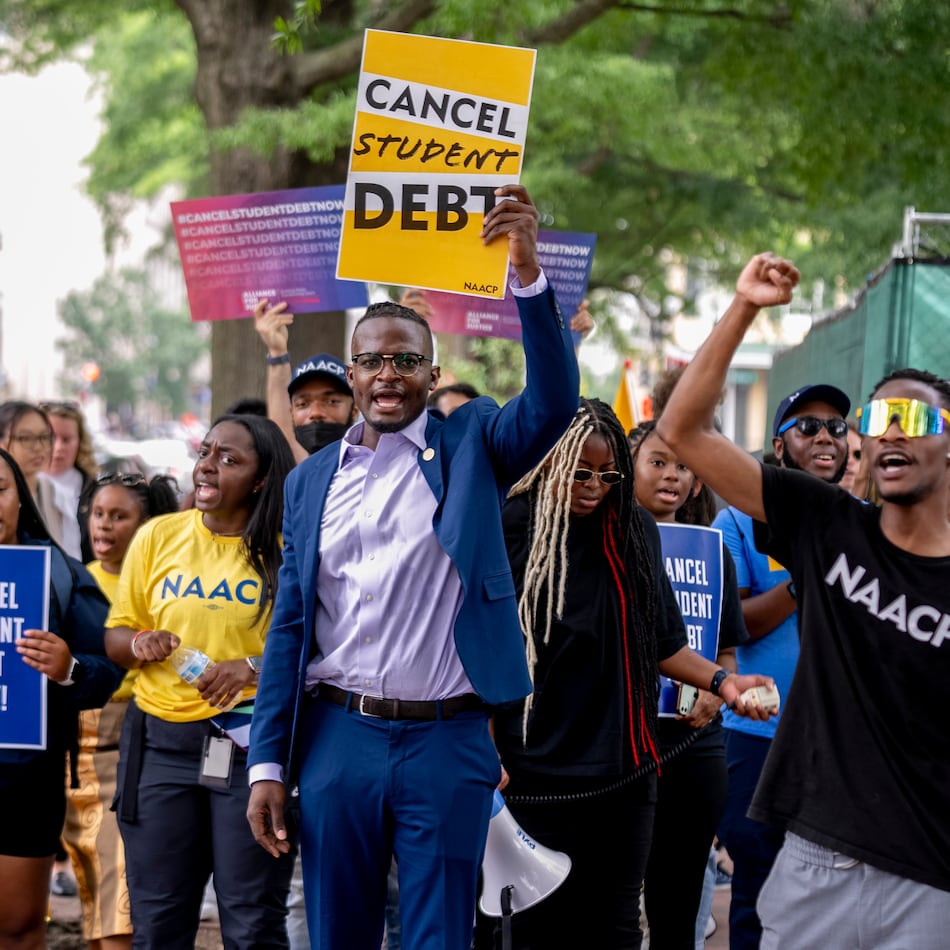COLUMBIA, S.C. (AP) — South Carolina is legally required to keep some protocols secret as it prepares to put a man to death by firing squad for the murder of a public safety officer, but the only previous execution by bullets the state carried out last month reveals a few key details.
There won't be any kind of countdown heard or seen by witnesses before three volunteers all with live ammunition fire on Mikal Mahdi on Friday in the death chamber at a Columbia prison.
There will be a target with a red bull's-eye on the chest of the man being put to death for killing an off-duty police officer in an ambush in 2004.
And instead of the green prison jumpsuits worn by death row inmates, Mahdi will likely be in black jogging pants and a T-shirt.
Mahdi chose a firing squad over lethal injection or electrocution, as Brad Sigmon did for his March 7 execution, which was the first time the state had used the method. Just three other inmates in the U.S. have faced a firing squad since the death penalty was reinstated in 1976 — all of them in Utah, in 1977, 1996 and 2010.
The crime
Mahdi, 41, was convicted of the 2004 death of Orangeburg Public Safety officer James Myers. Authorities said that Mahdi had killed a store clerk in North Carolina and stole a vehicle at gunpoint in Columbia when he hid in Myers' shed at his Calhoun County farm after he couldn't buy gas for the stolen car.
Myers was shot eight or nine times. His wife found his burned body in the shed, which had been the backdrop for their wedding 15 months earlier. Mahdi was arrested several days later in Myers' unmarked police truck in Florida.
Mahdi also pleaded guilty to shooting Winston-Salem, North Carolina, convenience store clerk Christopher Boggs twice in the head three days before Myers was killed. He was sentenced to life in prison for Boggs' death.
How Mahdi will die
Three prison employees who volunteer for the firing squad will kill Mahdi. They will hold rifles about 15 feet (4.6 meters) away, the distance from a basketball backboard to the free throw line.
Just before 6 p.m. Friday, the warden will ask Gov. Henry McMaster by phone if he is granting clemency and the Attorney General's Office if there are any legal blocks to the execution.
If both answers are no, Mahdi will enter the death chamber at the Broad River Correctional Institution in Columbia and be secured to a chair with straps around his waist, ankles and arms.
Then the curtain to the witness room will open and the right side of Mahdi’s face and body will be toward the window.
His lawyer or a prison official can read his final statement if he wishes. A hood will be placed on his head by a prison employee who then will walk across the room and open a black pull shade covering the rectangular window where the shooters are.
Without warning to the witnesses, the shots will be fired. In Sigmon's execution, the white target disappeared and a red stain the size of a fist could be seen on the condemned inmate's chest.
A doctor with a stethoscope will come out shortly afterward to confirm Mahdi is dead. The witnesses will leave after signing an official document that they witnessed the execution.
The firing squad
Not much is known about the people who will fire the rifles. Prison officials said they have “completed all required training.”
A shield law passed in 2023, in part to keep the name of any supplier of lethal injection drugs secret, also keeps secret many details about the firing squad, including the names of anyone on the execution team and what specific training they received.
A few details came out in court in 2022 during an unrelated trial that ultimately led the state Supreme Court to rule the firing squad, electric chair and lethal injection were all legal and didn’t violate the U.S. Constitution’s ban on cruel and unusual punishment.
The state will use .308-caliber Winchester 110-grain TAP Urban ammunition often found in police rifles, said Colie Rushton, the director of Security and Emergency Operations at the Corrections Department.
Why that bullet?
The round is designed to break apart as soon as it hits something firm, in this case the prisoner’s rib cage. Fragments will spread out, and the intent is to destroy as much of the heart as possible.
A medical expert for the state said at the 2022 trial that if the heart is heavily damaged an inmate would lose consciousness almost immediately and likely not feel pain. The doctor said survivors of gunshots often report first feeling like they were punched and pain only following a few seconds later.
But a doctor testifying for inmates said it could take longer for an inmate to lose consciousness. He said that, anyone who has broken a rib knows, breathing becomes extremely painful once the bones in the chest are cracked.
If the aim of the executioners is not true, death could take even longer. Damaged hearts can continue to pump blood.
The information released by the state to the public gives no indication what might happen if an inmate survives the initial shots. At the 2022 trial, a doctor testifying on behalf of inmates said his review of protocols indicated the squad could fire again.
—-
This story has been updated to correct that one of Utah's firing squad executions was 1996, not 1966.
Credit: AP
Credit: AP
Credit: AP
Credit: AP
Keep Reading
The Latest
Featured





